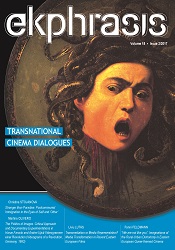The Civil War and Revolution in Stalinist Films. Cult Films, Evasiveness and Clichés
The Civil War and Revolution in Stalinist Films. Cult Films, Evasiveness and Clichés
Author(s): Olga GradinaruSubject(s): Fine Arts / Performing Arts
Published by: Universitatea Babeş-Bolyai, Facultatea de Teatru si Televiziune
Keywords: Stalinist cinema and myths; evasiveness and clichés; representation of the Civil War and the Russian Revolution; the Civil War cult
Summary/Abstract: Having as a starting point the fact that the Stalinist cinematography played the role of an institution in producing history, the paper proposes analysis of films which tackle the Civil War and the Russian Revolution. Regardless of what films we take into account – whether the cult films of the Soviet cinematography (October (1927) directed by S. Eisenstein or The End of St. Petersburg (1927) directed by V. Pudovkin); some famous adaptations (And Quiet Flows the Don (1930) or Chapaev 1934); films inspired by historical figures (Baltic Deputy (1936) and Kotovsky 1942) – we point out to patterns, related to war, time and memory.The analyzed films reflect a peculiar way of building history, which reveals facets of Stalinist era. On one hand, Stalinist art and rhetoric of the ’30s install a temporal hierarchy of high importance for the Soviet Union – designating the October Revolution and Russian Civil War as a crucial moment, a variation of the Great Time in Mircea Eliade’s understanding, which was at the beginning, but also the celebrated paradigm of the new history, projected into the future (Clark 2000, 39-40). On the other hand, Socialist Realism established the basis of what proved to be a fruitful system of using renowned heroes from the collective mentality in order to canonize them through ideological fictionalization, historicizing and film adaptation, with all subsequent mythologizing mutations, so that a greater impact on the masses would be acquired1.Our main concern is to identify the ways in which the following aspects are articulated in films: legitimacy of the Stalinist regime and related myths (great family and variations of “father” and “son” relationship, graveside oaths, picking up the banner, (female) martyr, etc.), representation of The Civit War and Revolution.
Journal: Ekphrasis. Images, Cinema, Theory, Media
- Issue Year: 18/2017
- Issue No: 2
- Page Range: 120-130
- Page Count: 10
- Language: English

